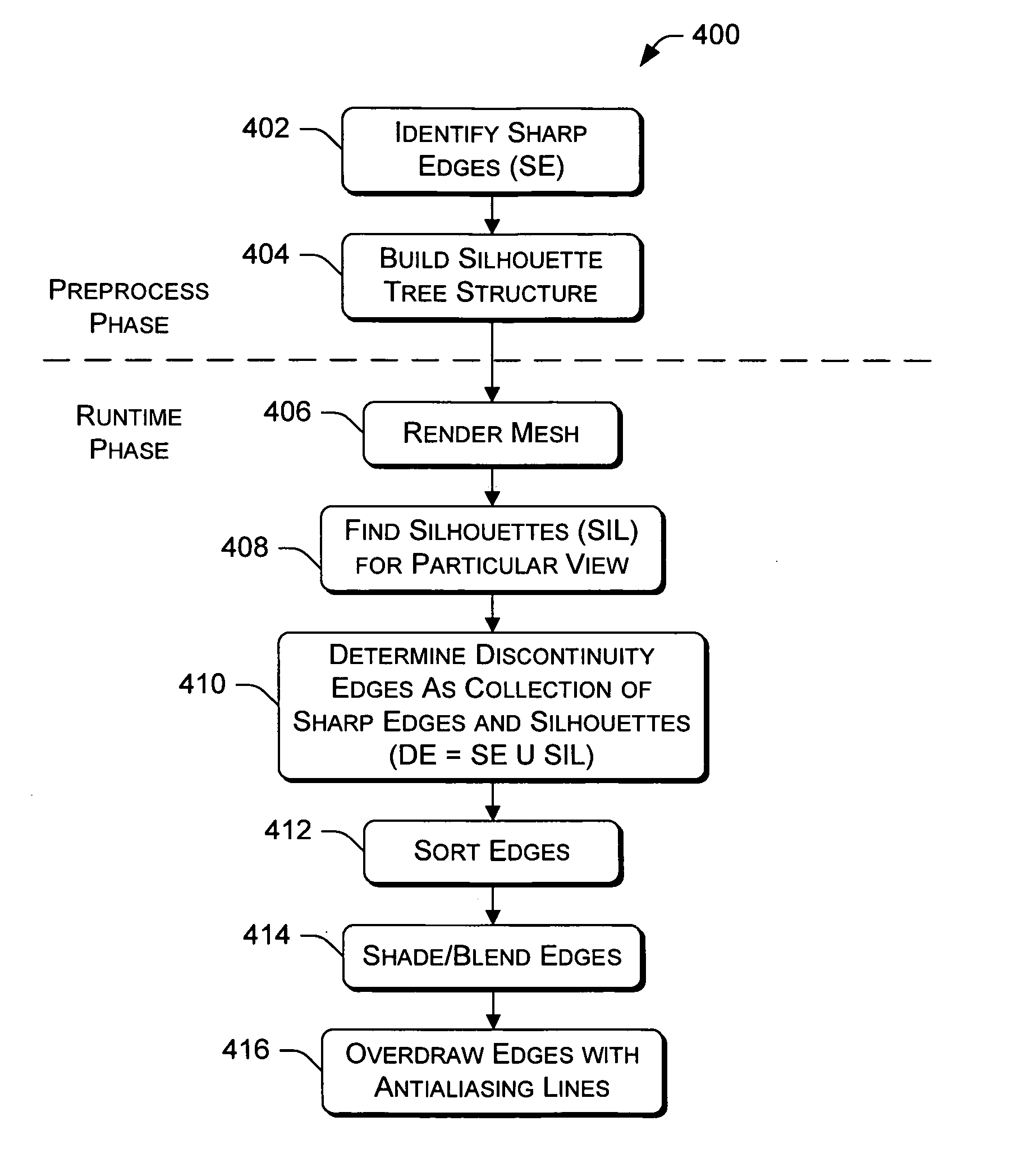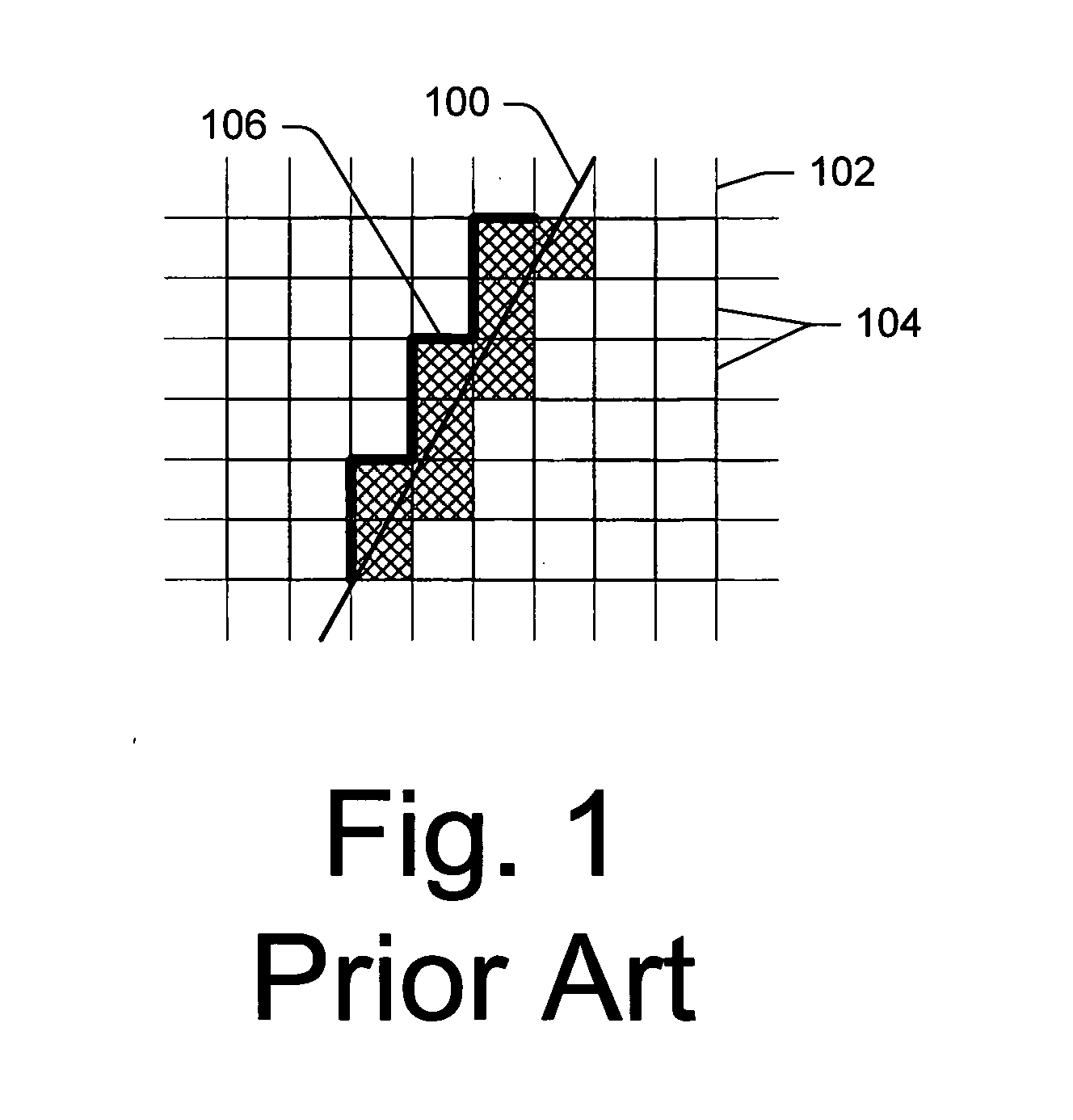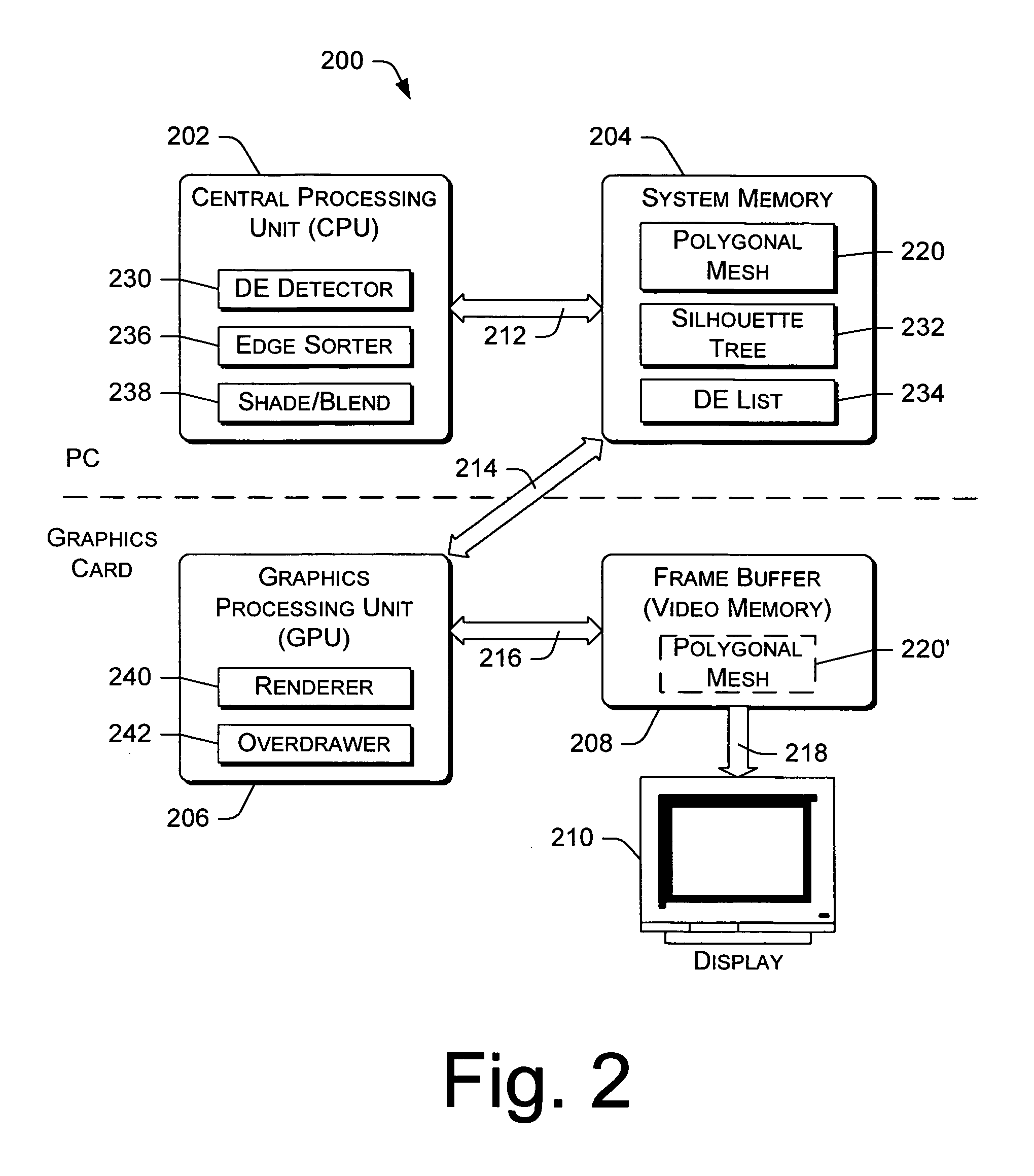Discontinuity edge overdraw
a discontinuity edge and edge overdrawing technology, applied in the field of computer graphics, can solve the problems of computational cost, difficult to determine which edges should be anti-aliased, and still computational cost, and achieve the effect of reducing aliasing
- Summary
- Abstract
- Description
- Claims
- Application Information
AI Technical Summary
Benefits of technology
Problems solved by technology
Method used
Image
Examples
Embodiment Construction
[0031] Aliasing is an important problem when rendering polygon meshes, such as triangle meshes. A major component of aliasing occurs along discontinuity edges such as silhouettes, creases, and material boundaries. Reduction of aliasing artifacts along discontinuity edges of a render polygon mesh is achieved by overdrawing the edges as anti-aliased lines. The result of edge overdraw differs from traditional anti-aliasing methods like supersampling in that one side of each discontinuity edge is “bloated” by a fraction of a pixel.
[0032] As further refinements, the discontinuity edges are oriented consistently and blended as they approach silhouettes in the mesh to avoid popping at the edge, thereby achieving a temporal smoothness at the silhouettes. Unfortunately, edge blending may produce blurriness. Thus, to balance temporal smoothness with spatial sharpness, an asymmetric blending technique is employed. To further improve results, the discontinuity edges are sorted by depth prior t...
PUM
 Login to View More
Login to View More Abstract
Description
Claims
Application Information
 Login to View More
Login to View More - R&D
- Intellectual Property
- Life Sciences
- Materials
- Tech Scout
- Unparalleled Data Quality
- Higher Quality Content
- 60% Fewer Hallucinations
Browse by: Latest US Patents, China's latest patents, Technical Efficacy Thesaurus, Application Domain, Technology Topic, Popular Technical Reports.
© 2025 PatSnap. All rights reserved.Legal|Privacy policy|Modern Slavery Act Transparency Statement|Sitemap|About US| Contact US: help@patsnap.com



